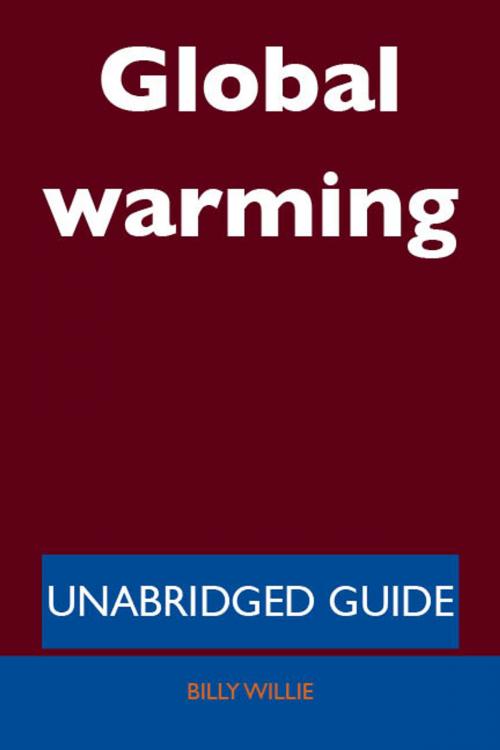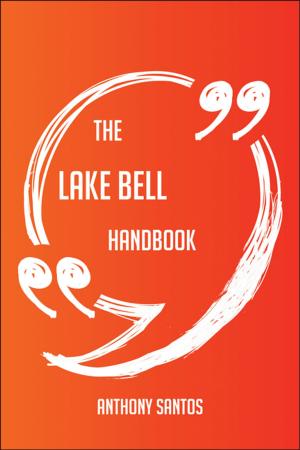| Author: | Billy Willie | ISBN: | 9781486428656 |
| Publisher: | Emereo Publishing | Publication: | October 24, 2012 |
| Imprint: | Emereo Publishing | Language: | English |
| Author: | Billy Willie |
| ISBN: | 9781486428656 |
| Publisher: | Emereo Publishing |
| Publication: | October 24, 2012 |
| Imprint: | Emereo Publishing |
| Language: | English |
Here's part of the content - you would like to know it all? Delve into this book today!..... : Importantly, the team made three extremely conservative assumptions: (1) that policymakers will embrace the A1B scenario instead of the A1FI scenario, (2) that all of the carbon would be released as carbon dioxide instead of methane, which is more likely and over a 20 year lifetime has 72x the greenhouse warming power of CO2, and (3) their model did not project additional temperature rise caused by the release of these additional gases.
...For example, the uncertainty in IPCC's 2007 projections is caused by (1) the use of multiple models with differing sensitivity to greenhouse gas concentrations, (2) the use of differing estimates of humanities' future greenhouse gas emissions, (3) any additional emissions from climate feedbacks that were not included in the models IPCC used to prepare its report, i. e. , greenhouse gas releases from permafrost.
...This was justified on the basis that: the developed world's emissions had contributed most to the stock of GHGs in the atmosphere; per-capita emissions (i. e. , emissions per head of population) were still relatively low in developing countries; and the emissions of developing countries would grow to meet their development needs. :290 This mandate was sustained in the Kyoto Protocol to the Framework Convention,:290 which entered into legal effect in 2005.
...A preliminary assessment published in November 2010 by the United Nations Environment Programme (UNEP) suggests a possible emissions gap between the voluntary pledges made in the Accord and the emissions cuts necessary to have a likely (greater than 66% probability) chance of meeting the 2 °C objective. :10-14 The UNEP assessment takes the 2 °C objective as being measured against the pre-industrial global mean temperature level.
There is absolutely nothing that isn't thoroughly covered in the book. It is straightforward, and does an excellent job of explaining all about Global warming in key topics and material. There is no reason to invest in any other materials to learn about Global warming. You'll understand it all.
Inside the Guide: Global warming, Climate change and ecosystems, Climate change and agriculture, Climate change, industry and society, Climate change, Climate Change Science Program, Clean Development Mechanism, Chlorofluorocarbon, Charles David Keeling, Caribbean, Carbon tax, Carbon sink, Carbon offset, Carbon dioxide removal, Carbon dioxide in Earth's atmosphere, Carbon dioxide, Carbon cycle, Carbon credit, Carbon capture and storage, Canadian Meteorological and Oceanographic Society, Bond event, Black carbon, Biofuel, Bali Road Map, Avoiding dangerous climate change, Australian Meteorological and Oceanographic Society, Attribution of recent climate change, Atlantic multidecadal oscillation, Arctic methane release, Arctic haze, Arctic dipole anomaly, Anoxic event, American Physical Society, Albrecht effect, Albedo, Adaptation to global warming, Abrupt climate change, 2010 United Nations Climate Change Conference, 2009 United Nations Climate Change Conference
Here's part of the content - you would like to know it all? Delve into this book today!..... : Importantly, the team made three extremely conservative assumptions: (1) that policymakers will embrace the A1B scenario instead of the A1FI scenario, (2) that all of the carbon would be released as carbon dioxide instead of methane, which is more likely and over a 20 year lifetime has 72x the greenhouse warming power of CO2, and (3) their model did not project additional temperature rise caused by the release of these additional gases.
...For example, the uncertainty in IPCC's 2007 projections is caused by (1) the use of multiple models with differing sensitivity to greenhouse gas concentrations, (2) the use of differing estimates of humanities' future greenhouse gas emissions, (3) any additional emissions from climate feedbacks that were not included in the models IPCC used to prepare its report, i. e. , greenhouse gas releases from permafrost.
...This was justified on the basis that: the developed world's emissions had contributed most to the stock of GHGs in the atmosphere; per-capita emissions (i. e. , emissions per head of population) were still relatively low in developing countries; and the emissions of developing countries would grow to meet their development needs. :290 This mandate was sustained in the Kyoto Protocol to the Framework Convention,:290 which entered into legal effect in 2005.
...A preliminary assessment published in November 2010 by the United Nations Environment Programme (UNEP) suggests a possible emissions gap between the voluntary pledges made in the Accord and the emissions cuts necessary to have a likely (greater than 66% probability) chance of meeting the 2 °C objective. :10-14 The UNEP assessment takes the 2 °C objective as being measured against the pre-industrial global mean temperature level.
There is absolutely nothing that isn't thoroughly covered in the book. It is straightforward, and does an excellent job of explaining all about Global warming in key topics and material. There is no reason to invest in any other materials to learn about Global warming. You'll understand it all.
Inside the Guide: Global warming, Climate change and ecosystems, Climate change and agriculture, Climate change, industry and society, Climate change, Climate Change Science Program, Clean Development Mechanism, Chlorofluorocarbon, Charles David Keeling, Caribbean, Carbon tax, Carbon sink, Carbon offset, Carbon dioxide removal, Carbon dioxide in Earth's atmosphere, Carbon dioxide, Carbon cycle, Carbon credit, Carbon capture and storage, Canadian Meteorological and Oceanographic Society, Bond event, Black carbon, Biofuel, Bali Road Map, Avoiding dangerous climate change, Australian Meteorological and Oceanographic Society, Attribution of recent climate change, Atlantic multidecadal oscillation, Arctic methane release, Arctic haze, Arctic dipole anomaly, Anoxic event, American Physical Society, Albrecht effect, Albedo, Adaptation to global warming, Abrupt climate change, 2010 United Nations Climate Change Conference, 2009 United Nations Climate Change Conference















